
information page
Here is a wide range of information on many different subjects, which you can view or download. Click any link on the left side bar to see all the available articles or links within the subject area. All the articles, presentations and books are free to download and use. Type keywords in the search field below to find a specific item.
Animal Biosafety
Here are some documents related to animal biosafety, animal welfare, animal housing and procedures. Animals are often used in research, teaching, diagnostics or behavioral studies. Working with animals brings a different set of challenges to biorisk management that need to be understood and controlled. Arguably, animal biorisk management can be much more difficult than laboratory biorisk management because you now need to deal with the animal issues and their diseases. Documents and links in this section will provide some guidance and help.
Animal Welfare
Animal Welfare - Animal care and use, ethics, pain and suffering
When using animals in biomedical work, it is your responsibility to ensure that they are used only when necessary, in the least numbers to obtain valid results and they are housed and treated humanely.

A link to the United Kingdom Animal Welfare Act of 2006 – Welfare Act.html
From the American Veterinary Medical Association, a link to Animal Welfare in Laboratory Animals – Animal Welfare.html
A PDF for download on the International Guiding Principles for Biomedical Research Involving Animals – International Animal Welfare.pdf
Animal Housing
Guidelines for housing of all species of animals
Each animal is very different and therefore requires different housing conditions. Ensuring that animals are housed properly is vital to good animal welfare and experimental results. The following guidelines will help your learn the appropriate way to house the animals under your care.

A PDF document for download: Guide for the Care and Use of Laboratory Animals – 8th Edition from the National Academies of Science (USA) Guide for the Care and Use of Laboratory Animals – 8th Edition.pdf
A PDF document for download: Public Health Service Policy on Humane Care and Use of Laboratory Animals, 2015 (USA) US PHS policy on laboratory animals. pdf
Infection Control
Preventing transmission of pathogens from animals to humans, humans to animals and animals to animals
A good animal biorisk management program must prevent the transmission of disease agents. The following documents and links will provide you with guidance and risk control measures.

Compendium Of Veterinary Standard Precautions: Zoonotic Disease Prevention In Veterinary Personnel from the National Association of State Public Health Veterinarians Veterinary Infection Control Committee, 2006 Compendium of Veterinary Standard Precautions. pdf
Associations
There are a large number of different associations and organizations that are directly or indirectly related to biorisk management. Below are a large number of links to their websites in alphabetical order.
Association of Biosafety for Australia and New Zealand – https://www.absanz.org.au/
American Biological Safety Association International – https://absa.org/
Belgium Biosafety Professionals – https://www.ebsaweb.eu/bbp/bbp
BioRisk Association of the Philippines 2025, Inc. (BRAP2015) https://bioriskassociationphilippines.org.
Canadian Association for Biological Safety – https://www.cabs-acsb.ca/
European Biosafety Association – https://www.ebsaweb.eu/
International Federation of Biosafety Associations – https://internationalbiosafety.org/
Swiss Biosafety Network – www.swissbiosafety.ch
USA, National Institutes of Health (NIH) Biosafety Resources – https://ors.od.nih.gov/sr/dohs/safety/laboratory/BioSafety/Pages/bio_chem_safety.aspx
USA Center for Disease Control (CDC) Biosafety Resources – https://www.cdc.gov/safelabs/resources-tools/biosafety-resources-and-tools.html
Biosafety cabinets
Biosafety cabinets are the the most important engineering control to use in a biomedical facility to reduce biorisk. They can protect you, your work and the environment. Since there are several different types, you must select the correct one based upon risk reduction required. You need to know that they should be certified regularly and how this is done. The links below will provide the information you need to learn more.
Documents
Biosafety in Microbiological and Biomedical Laboratories, 6th Edition (2020) – Appendix A: Primary Containment for Biohazards: Selection, Installation, and Use of Biological Safety Cabinets (page 367) – https://www.cdc.gov/labs/pdf/SF__19_308133-A_BMBL6_00-BOOK-WEB-final-3.pdf
From the Baker Company, a decision tree to help you decide what type of biosafety cabinet to get – https://biosafetyonline.org/wp-content/uploads/2021/06/BakerCo-BSC-DecisionMap2013.pdf
A poster (PDF download) on how to use a biosafety cabinet, from the Government of Canada – https://biosafetyonline.org/wp-content/uploads/2021/06/Biological-safety-cabinet-instructions.pdf
A generic biosafety cabinet use protocol (Word document download) – https://biosafetyonline.org/wp-content/uploads/2021/06/Biological-Safety-Cabinet-Use-Protocol.doc
A biosafety article (PDF download) refuting the use of UV in the biosafety cabinet for decontamination – https://biosafetyonline.org/wp-content/uploads/2021/06/Biosafety-Cabs-and-UV-by-Burgener.pdf
A biosafety article (PDF download) recommending the use of UV in the biosafety cabinet for decontamination – https://biosafetyonline.org/wp-content/uploads/2021/06/Biosafety-cabs-and-UV-by-Meachan.pdf
A biosafety article (PDF download) on connecting a biosafety cabinet to an exhaust duct – https://biosafetyonline.org/wp-content/uploads/2021/06/BiosafetyTips-Connecting-a-BSC-to-Exhaust-Duct.pdf
An article (PDF download) on the placement of biosafety cabinets in the laboratory from the US National Institutes of Health (NIH) News to Use series – https://biosafetyonline.org/wp-content/uploads/2021/06/Placement-of-Biosafety-Cabinets-in-the-Laboratory.pdf
From the Journal of Applied Biosafety (PDF download) – A Discussion of Biological Safety Cabinet Decontamination Methods: Formaldehyde, Chlorine Dioxide, and Vapor Phase Hydrogen Peroxide – https://biosafetyonline.org/wp-content/uploads/2021/09/BSC-decontamination-methods.pdf
From the Journal of Applied Biosafety (PDF download) – Decontamination of a Worst-case Scenario Class II Biosafety Cabinet Using Vaporous Hydrogen Peroxide – https://biosafetyonline.org/wp-content/uploads/2021/09/BSC-decontamtion-using-VHP-methods.pdf
Videos
How biosafety cabinets work to protect you from the US National Institutes of Health on YouTube – https://www.youtube.com/watch?v=96-aZLom340
How to use a biosafety cabinet, from Arizona State University on YouTube – https://www.youtube.com/watch?v=q_C6xq7j-kg
An overview of biosafety cabinets and their safe use, from ESCO on YouTube – https://www.youtube.com/watch?v=ZnUW1N-JJz8
Visualization of air flow patterns in a biosafety cabinet, from Basler Hofmann on YouTube – https://www.youtube.com/watch?v=KqaWM5Dd15c
Overview of different ventilated enclosures with emphasis on the Class II biosafety cabinet, from Australia on YouTube – https://www.youtube.com/watch?v=Osr2r4Pg-W8
Cleaning up a spill inside the biosafety cabinet on YouTube – https://www.youtube.com/watch?v=4St9yxL-crw
Biosecurity & Bioethics
Biosafety and bioethics when working with biological agents is extremely important. These are closely linked to biosafety and have many overlaps in programs management. Below are many useful references and links that will help you to understand and implement biosecurity and bioethics in your work and workplace.

A guide (PDF download) on implementing a safety culture at Universities – https://biosafetyonline.org/wp-content/uploads/2021/06/A-guide-for-implementing-a-safety-culture-at-Universities.pdf
A guide (PDF download) to responsible research – https://biosafetyonline.org/wp-content/uploads/2021/06/A-guide-to-responsible-conduct-of-research.pdf
A article (PDF download) from the National Academy of Sciences – Dual Use Research of Concern in the Life Sciences: Current issues and controversies – https://biosafetyonline.org/wp-content/uploads/2021/06/Dual-use-Research-Life-Science-Issues-2017.pdf
An article (PDF download) from the National Academy of Sciences – Governance of Dual Use Research in the Life Sciences: Advancing Global Consensus on Research Oversight – https://biosafetyonline.org/wp-content/uploads/2021/06/Governance-of-Dual-Use-Research-2018.pdf
An article (PDF download) from the National Academy of Sciences – An Examination of Emerging Bioethical Issues in Biomedical
Research: Proceedings of a Workshop (2020) – https://biosafetyonline.org/wp-content/uploads/2021/06/NAP-Emerging-Bioethical-Issues-2020.pdf
Disinfection & Sterilization
Disinfection, decontamination and sterilization are very important parts of overall biorisk management. When working with infectious pathogenic agents, you want to be sure the microorganisms are reduced in number (below and infectious amount) or destroyed. It is important to understand the degree of organism removal required, based upon a risk assessment and realize that not all destructive methods work equally. Microbial organism vary widely in their resistance to destruction. The links below will help you learn more and make better choices regarding decontamination and sterilization.
General
A link to the US Centers for Disease Control web page on Disinfection and Sterilization, which contains may useful definitions and information – https://www.icc-iso.org/
A guide (PDF download) to disinfection and sterilization (2019), from the US Centers for Disease Control – https://biosafetyonline.org/wp-content/uploads/2021/06/CDC-disinfection-guidelines-2019.pdf
A guideline for Disinfection and Sterilization in Healthcare Facilities, from the US Centers for Disease Control (PDF download) – https://biosafetyonline.org/wp-content/uploads/2021/08/CD-in-Health-care-facilities-Nov-2008.pdf
Biosafety in the Laboratory: Prudent Practices for Handling and Disposal of Infectious Materials (PDF download) from the US National Academies of Sciences – https://biosafetyonline.org/wp-content/uploads/2021/08/Handling-and-Disposal-of-Infectious-Materials.pdf
Sterilization, disinfection and cleaning of medical equipment: guidance on decontamination from the Microbiology Advisory Committee (the MAC manual) Part 1 Principles 3rd edition May 2010 (PDF download) – https://biosafetyonline.org/wp-content/uploads/2021/08/Sterilization-disinfection-and-cleaning-of-medical-equipment-2010.pdf
How long do nosocomial pathogens persist on inanimate surfaces? A systematic review: An article from BioMed Central (PDF download) – https://biosafetyonline.org/wp-content/uploads/2021/09/Pathogen-Env-Stability.pdf
Autoclaves
Autoclaves are the most useful and effective means of destroying all microbial living organisms in a facility. You must understand how to use them properly and effectively. Validation and safety inspections are critical to their safe and effective use.

Documents
A guideline (PDF download) for the safe use of autoclaves, from the University of Ottawa – https://biosafetyonline.org/wp-content/uploads/2021/08/A-guideline-for-the-safe-use-of-autoclaves.pdf
Autoclave safety manual, from Arizona State University (PDF download) – https://biosafetyonline.org/wp-content/uploads/2021/08/asu-autoclave-safety-manual.pdf
AUTOCLAVE EMISSIONS-HAZARDOUS OR NOT – A publication from the American Biological Safety Association (PDF download) – https://biosafetyonline.org/wp-content/uploads/2021/08/Autoclave-Emissions—Hazardous-or-Not.pdf
A review of autoclaves, history, operation and use from Howard Judelson 6/28/04 (PDF download) – https://biosafetyonline.org/wp-content/uploads/2021/08/autoclave-operation.pdf
Autoclave validation by Felix Gmuender (link to article on Linkedin) – https://www.linkedin.com/pulse/autoclave-validation-microbiological-biomedical-mbl-felix-gmuender
Procedure for the Validation of a Medical Waste Autoclave (PDF download) – https://biosafetyonline.org/wp-content/uploads/2021/08/Medical-Waste-Autoclave-Validation.pdf
Micro-Lab/ Medical Waste Sterilization Made Easier by Russ Nyberg (PDF download) – https://biosafetyonline.org/wp-content/uploads/2021/08/Medical-Waste-Sterilization.pdf
Monitoring Bio/Med Waste Bags with Spore Strips as Biological Indicators and ‘False’ Negatives by Russ Nyberg (PDF download) – https://biosafetyonline.org/wp-content/uploads/2021/08/Monitoring-BioWaste-Bags-with-Biological-Indicators-1.pdf
Comparison of Rapid Readout Biological Indicator for Steam Sterilization with Four Conventional Biological Indicators and Five Chemical Indicators, from the Journal of Infection Control and Hospital Epidemiology, 1996 (PDF download) – https://biosafetyonline.org/wp-content/uploads/2021/08/Rapid-Sterility-test-verus-conventional-BI.pdf
Using replicate BIs to evaluate biodecontamination cycles in isolators by Garrett Krushefski (PDF download) – https://biosafetyonline.org/wp-content/uploads/2021/08/Spore-News-Vol-9-No4.pdf
Steam Autoclave Usage for Safety and Quality Control poster (PDF download) from US Centers for Disease Control – https://biosafetyonline.org/wp-content/uploads/2021/08/Steam-Autoclave-Usage-For-Safety-and-Quality-Control-Poster.pdf
The Use of Biological Indicators for Steam Sterilization by Tim Sandle (PDF download) – https://biosafetyonline.org/wp-content/uploads/2021/08/The-Use-of-Biological-Indicators-for-Steam-Sterilization.pdf
Novel Approach for Validating Autoclave Cycles for Biomass in BSL-3/-4 from the Journal of Applied Biosafety (PDF download) – https://biosafetyonline.org/wp-content/uploads/2021/08/Validating-autoclave-for-biomass.pdf
Videos
A link to a series of videos on autoclave use and maintenance from Consolidated Sterilizer Systems – https://consteril.com/resources/instructional-videos/
A link to a video from the Arizona State University on autoclave use and safety – https://www.youtube.com/watch?v=rM_JTgLSKXk
Liquid chemical
Liquid chemicals are the most widely used means of decontamination in a facility. Unlike autoclaves, they may not lead to the total destruction of all microorganisms. There is a very wide range of liquid chemicals available and their use and selection should be based upon a risk assessment. Be aware, they are a hazard themselves and should be treated as such.

A link to the US Centers for Disease Control web page on Disinfection and Sterilization, which contains many useful definitions and information – https://www.icc-iso.org/
A guide (PDF download) to disinfection and sterilization (2019), from the US Centers for Disease Control – https://biosafetyonline.org/wp-content/uploads/2021/06/CDC-disinfection-guidelines-2019.pdf
An article (PDF download) from the Journal of General Virology – Fast, broad-range disinfection of bacteria, fungi, viruses and prions – https://biosafetyonline.org/wp-content/uploads/2021/09/Broad-range-disinfectant.pdf
A poster on the Characteristics of Select Disinfectants from the Center for Food Security and Public Health at Iowa State University – https://biosafetyonline.org/wp-content/uploads/2021/09/Characteristics-of-Selected-Disinfectants.pdf
Registration of Disinfectants Based on Relative Microbicidal Activity – An article from Infection Control and Hospital Epidemiology (PDF download) – https://biosafetyonline.org/wp-content/uploads/2021/09/Review-of-Decontamination.pdf
Stability and Bactericidal Activity of Chlorine Solutions – An article from Infection Control and Hospital Epidemiology (PDF download) – https://biosafetyonline.org/wp-content/uploads/2021/09/Stability-of-Chlorine-Solutions.pdf
An overview (table) of disinfectant use (Word doc download) – https://biosafetyonline.org/wp-content/uploads/2021/09/disinfectant-tables.docx
Useful Dilutions of Wescodyne and Common Household Bleach (Word doc download) – https://biosafetyonline.org/wp-content/uploads/2021/09/Disinfectant-dilutions.docx
Disinfection using Chlorine Bleach Fact Sheet from Oregon State University (Word doc download) – https://biosafetyonline.org/wp-content/uploads/2021/09/Chlorine-Fact-Sheet.docx
Emergency & Incident Response
When unplanned events occur, are you prepared? Incidents (minor issues) and emergencies (serious issues) occur everywhere and everyday. Anything that disrupts your normal daily activity from illness to explosions, should be anticipated and planned for. Your response to the issue (incident or emergency) will make a big difference to how well the issue is resolved. Therefore, the greater the preparation and implementation of a practiced response, the better the outcome. The links below will help you prepare and respond.
Principal Emergency Response and Preparedness Requirements and Guidance – United States Occupational Safety and Health Administration, U.S. Department of Labor OSHA 3122-06R 2004 (PDF download) – https://biosafetyonline.org/wp-content/uploads/2021/09/OSHA-Emergency-Response-Guidelines.pdf
Emergency Drills & Exercises (PDF download) – https://biosafetyonline.org/wp-content/uploads/2021/09/Emergency-Drills-and-Exercises.pdf
US Centers for Diseases Control Public Health Emergency Response Guide (PDF download) – https://biosafetyonline.org/wp-content/uploads/2021/09/cdc-emergency-response-guide.pdf
Conducting Crisis Exercises and Drills: Guidelines for Schools (PDF download) – https://biosafetyonline.org/wp-content/uploads/2021/09/Conducting-crisis-drills-exercises-guidance.pdf
Emergency and Disaster Preparedness for Health Facilities (PDF download) – https://biosafetyonline.org/wp-content/uploads/2021/09/Emergency-Prepardness-for-Hospitals.pdf
Hospital emergency response checklist from the World Health Organization (PDF download) – https://biosafetyonline.org/wp-content/uploads/2021/09/Hospital-emergency-response-checklist-Eng.pdf
Generic laboratory incident report form template (Word doc download) – https://biosafetyonline.org/wp-content/uploads/2021/09/Lab-incident-report-form.doc
Best Practices for Protecting EMS Responders during Treatment and Transport of Victims of Hazardous Substance Releases – United States Occupational Safety and Health Administration, U.S. Department of Labor OSHA 3370-11
2009 (PDF download) – https://biosafetyonline.org/wp-content/uploads/2021/09/Protecting-EMS-first-responders.pdf
Fire
Fires - paper, chemical, plastic, cloth, wood, etc.
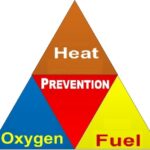
A link to the Health and Safety Authority web page on Fire Prevention – https://www.hsa.ie/eng/Topics/Fire/Fire_Prevention/
A link to the US Fire Prevention Public Education page on Fire Safety – https://www.usfa.fema.gov/prevention/
A link to the National Fire Protection Association – https://www.nfpa.org/Public-Education
A link to developing a Fire Prevention Plan from the US Department of Labor, Occupational Safety and Health Administration – https://www.osha.gov/etools/evacuation-plans-procedures/emergency-standards/fire-prevention
Medical emergencies
People work in facilities and people have medical issues. Everything from small cuts to major heart attacks can and do occur. Depending upon who that person is, where the incident happened and how you respond can make a big difference (life or death). Everyone working in a biomedical facility needs to be prepared every day for a medical emergency.
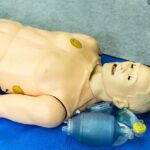
Documents
First Aid Awareness (download Word doc) – https://biosafetyonline.org/wp-content/uploads/2021/09/First-aid-awareness.docx
A link to Be Prepared: 10 Common Medical Emergencies & How to Deal With Them – https://www.thebetterindia.com/155315/first-aid-medical-emergencies-news/
Hospital Emergency Medicine Manual – https://biosafetyonline.org/wp-content/uploads/2021/09/Hospital-Emergency-Medicine-Manual.pdf
Videos
How to do the Primary Survey – First Aid Training from St John Ambulance (YouTube link) – https://www.youtube.com/watch?v=ea1RJUOiNfQ
How to Treat Severe Bleeding – First Aid Training from St John Ambulance (YouTube link) – https://www.youtube.com/watch?v=NxO5LvgqZe0
First aid 101: How to treat a cut from Living Better – https://www.youtube.com/watch?v=faonl3-t6MA
Practical First Aid #18 – Sprains and Strains from Fleming Medical (YouTube link) – https://www.youtube.com/watch?v=BZMD3cfyjVI
What To Do If Someone Is Having A Diabetic Emergency – First Aid Training from St John Ambulance (YouTube link) – https://www.youtube.com/watch?v=L06DNMRcy98
What To Do If Someone Has A Seizure – First Aid Training from St John Ambulance (YouTube link) – https://www.youtube.com/watch?v=Ovsw7tdneqE
Fainting Causes & Treatment – First Aid Training from St John Ambulance (YouTube link) – https://www.youtube.com/watch?v=ddHKwkMwNyI
How to Treat an Asthma Attack – First Aid Training from St John Ambulance (YouTube link) – https://www.youtube.com/watch?v=hdVKpUR513M
Heart Attack Symptoms & How to Treat a Heart Attack – First Aid Training from St John Ambulance (YouTube link) – https://www.youtube.com/watch?v=gDwt7dD3awc
What To Do When Someone Is Choking – First Aid Training from St John Ambulance (YouTube link) – https://www.youtube.com/watch?v=PA9hpOnvtCk
How to do CPR on an Adult First Aid Training from St John Ambulance (YouTube link) – https://www.youtube.com/watch?v=Q_QPCauSmvc
Biological spills
Spills - in the BSC, on the floor, on the bench, etc.
Spills of biological materials can and do happen every day in biomedical facilities. The consequences can be minor to large, depending upon what was spilled, the volume and how you respond. Everyone working in a biomedical facility needs to be prepared every day for a biological spill.

Documents
General spill response guidelines (Word doc download) – https://biosafetyonline.org/wp-content/uploads/2021/09/General-spill-response-guidelines.doc
How to make and use a biological spill kit (Word doc download) – https://biosafetyonline.org/wp-content/uploads/2021/09/BIOLOGICAL-SPILL-KIT-and-Procedure.doc
Microbial aerosol generation during laboratory accidents and subsequent risk assessment – from The Journal of Applied Microbiology (PDF download) – https://biosafetyonline.org/wp-content/uploads/2021/09/Aerosols-after-a-lab-spill-and-RA.pdf
A generic standard operating practice (SOP) spill template (Word doc download) – https://biosafetyonline.org/wp-content/uploads/2021/09/Spill-SOP-Template.docx
Videos
Biological Spill clean up from Rice University (YouTube link) – https://www.youtube.com/watch?v=Dkp_hFEq_1c
Cleaning a Blood Body Fluid Spill from Public Health Ontario (YouTube link) – https://www.youtube.com/watch?v=LpotQ8OYlmw
Cleaning Up a Spill (Bloodborne Pathogens) from Iowa State University (YouTube link) – https://www.youtube.com/watch?v=wURSIrKaNiw
Cleaning Up a Spill in the Biosafety Cabinet from Iowa State University (YouTube link) – https://www.youtube.com/watch?v=1Ko1YoUylfI
Cleaning up a spill inside the biosafety cabinet on YouTube – https://www.youtube.com/watch?v=4St9yxL-crw
Cleaning Up a Spill in the Biosafety Cabinet: Biosafety Level 3 from Iowa State University (YouTube link) – https://www.youtube.com/watch?v=4St9yxL-crw
Chemical spills
Spills - in the BSC, on the floor, on the bench, etc.
Chemical or various kinds are frequently found in most microbiology facilities. Therefore, spills of chemicals can and do occur. The consequences can be minor to large, depending upon what was spilled, the volume and how you respond. Everyone working in a biomedical facility needs to be prepared every day for a chemical spill.

A link to Chemical spill response from the University of California San Francisco – https://ehs.ucsf.edu/chemical-spills
Power loss
Power loss - transient, spikes, long-term, etc.
Power is an important component to the functionality of a safe and secure facility. When power is lost, (briefly or for an extend time) the correct response needs to be taken.
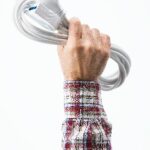
A link to a document on power failure response from Yale University – https://emergency.yale.edu/sites/default/files/files/Laboratories-and-Power-Outages.pdf
A link to “How to Prepare for a Power Failure in a Lab” from the University of California San Diego – https://blink.ucsd.edu/safety/research-lab/laboratory/power-failure.html#2.-While-the-power-is-off
A link to a 2-page pamphlet on power failure from the New Jersey Medical School – https://njms.rutgers.edu/about_njms/handbook/pdf/Appendix2August12012.pdf
From Perdue University a fillable Standard Operating Procedure document on Electrical failure (Word doc download) – https://biosafetyonline.org/wp-content/uploads/2021/09/sop-lab-electrical-power-failure.docx
Facility Construction
The facility (building and room) you work in is an important part of biorisk reduction. Well designed, maintained and operated facilities provide biorisk reduction through their engineering controls. In addition, they can also make it easier for you to conduct your work safely and securely. The links below will help you design, maintain and operate a supportive biomedical facility.
The US, National Institutes of Health Biomedical Facility Design Requirements Manual (2020) as PDF download – https://biosafetyonline.org/wp-content/uploads/2021/06/NIH-Design-Requirements-Manual-2020.pdf
A link to the US, National Institutes of Health, News to Use which provides short articles on many different facility design and construction issues – https://www.orf.od.nih.gov/TechnicalResources/Pages/DRM_News_to_Use.aspx
Forensic Science Laboratories: Handbook for Facility Planning, Design, Construction, and Relocation (NISTIR 7941), from the U.S. Department of Commerce, National Institute of Standards and Technology, 2013 (PDF download) – https://biosafetyonline.org/wp-content/uploads/2021/09/Forensic-Facility-Design.pdf
World Health Organization Biosafety Manual, 4th Ed (PDF download) – https://biosafetyonline.org/wp-content/uploads/2021/09/WHO-biosafety-manual-4th-Ed.pdf
Canadian Biosafety Standard, Second Edition (PDF download) – https://biosafetyonline.org/wp-content/uploads/2021/09/Canadain-Biosafety-Standards-2nd-Ed.pdf
World Health Organization Laboratory Design and Maintenance manual (PDF download) – https://biosafetyonline.org/wp-content/uploads/2021/09/WHO-lab-design-guidelines.pdf
A link to Laboratory Standard & Design Guidelines from Stanford University – https://ehs.stanford.edu/manual/laboratory-standard-design-guidelines
Yale University Guidelines for Safe Laboratory Design (PDF download) – https://biosafetyonline.org/wp-content/uploads/2021/09/laboratory-design-guidelines-from-Yale.pdf
Laboratory Safety Design Standards from Kings College, London England (PDF download) – https://biosafetyonline.org/wp-content/uploads/2021/09/Laboratory-Safety-Design-standards-from-Kings-College-in-London.pdf
A link to Laboratory Design Considerations from the University of California – https://lsdm.ucop.edu/sections/laboratory-design-considerations
United States National Institutes of Health GUIDELINES FOR RESEARCH INVOLVING RECOMBINANT OR SYNTHETIC
NUCLEIC ACID MOLECULES (NIH GUIDELINES) APRIL 2019 (PDF download) – https://biosafetyonline.org/wp-content/uploads/2021/09/NIH_Guidelines-2019.pdf
Infection Control
Infectious agents are always trying to find a way to move from one host to another. Infection control is the practice of limiting or stopping the spread of those infectious pathogens.

World Health Organization – Infection Control Guidelines (PDF download) https://biosafetyonline.org/wp-content/uploads/2021/11/AM_InfectionControl_Final.pdf
USA Centers for Disease Control -Guideline for Isolation Precautions: Preventing Transmission of Infectious Agents in Healthcare Settings (PDF download) https://biosafetyonline.org/wp-content/uploads/2021/11/CDC-isolation-guidelines-preventing-infections-in-a-health-care-setting.pdf
Cleaning Hospital Room Surfaces to Prevent Health Care–Associated Infections from the Annals of Internal Medicine 2015 (PDF download) – https://biosafetyonline.org/wp-content/uploads/2021/12/Cleaning-hospital-rooms-to-prevent-HAIs.pdf
USA Centers for Disease Control – Guide To Infection Prevention For Outpatient Settings: Minimum Expectations for Safe Care (PDF download) – https://biosafetyonline.org/wp-content/uploads/2021/12/Guide-to-infection-prevention-for-outpatient-settings.pdf
National Institute for Health Care Excellence 2014 (UK) – Infection prevention and control (PDF download) – https://biosafetyonline.org/wp-content/uploads/2021/12/NICE-infection-control-and-prevention.pdf
World Health Organization – Practical Guidelines for Infection Control in Health Care Facilities 2004 (PDF download) – https://biosafetyonline.org/wp-content/uploads/2021/12/Practical-guidelines-for-infection-control.pdf
USA Centers for Disease Control – Immunization of Health-Care Personnel Recommendations of the Advisory Committee on Immunization Practices (ACIP) 2011 (PDF download) – https://biosafetyonline.org/wp-content/uploads/2021/12/Immunization-of-Health-Care-Personnel.pdf
USA National Institute for Occupational Safety and Health – Implementing Hospital Respiratory Protection Programs: Strategies from the Field 2014 (PDF download) – https://biosafetyonline.org/wp-content/uploads/2021/12/Implementing-Hospital-Respiratory-Protection-Program_2-19-15.pdf
USA Centers for Disease Control – Guidelines for Environmental Infection Control in Health Care Facilities 2019 (PDF download) – https://biosafetyonline.org/wp-content/uploads/2021/12/Guidelines-for-Environmental-Infection-Control-in-Health-Care-Facilities.pdf
Personal Protective Equipment
Personal protective equipment is anything that you put on to create a barrier between you and the hazard. There are many types and choices of PPE. Use only what you need based upon the risk assessment. Learn more using the information below.
Hand protection
Gloves - plastic, cut resistant, thermal, chemical resistant, etc.
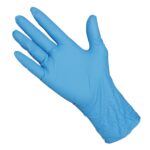
A PDF illustration of how to take off your gloves – Visual step-by-step glove removal procedure.pdf
A link to a You Tube video of the the beaking method of glove removal – An alternative method of glove removal.html
A PDF article of some different glove types – Glove types.pdf
Body protection
Body protection - Laboratory coats, gowns, scrubs, coveralls, etc.
Your body is potentially exposed to a variety of hazards. Covering the skin of your body with an appropriate layer of covering will provide a barrier of protection.
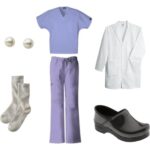
A link to an article from the Boston Globe regarding the validity and use of white laboratory coats for physicians. https://www.bostonglobe.com/metro/2015/11/18/doctors-debate-hanging-white-coat/wRJxWpiRFtm4ehy8Q9pIEJ/story.html
A guidance article (PDF download) from the US National Institutes of Health on the selection of laboratory coats – https://biosafetyonline.org/wp-content/uploads/2021/06/Guidance-for-the-Selection-of-Laboratory-Coats.pdf.pdf
A journal article (PDF download) of an article from the Journal of Biosafety on the importance of foot protection in the laboratory. https://biosafetyonline.org/wp-content/uploads/2021/06/Foot-Protection-Applied-Biosafety.pdf
A short not about the availability from one supplier of knife-resistant clothing – https://biosafetyonline.org/wp-content/uploads/2021/06/Knife-resistant-clothing.pdf
Eye protection
Eye protection - Safety glasses, face shield, goggles, etc.
Eye protection is vital. Based upon a risk assessment, appropriate eye protection must be worn to protect against a hazardous situation.

United States Department of Health, Centers for Disease Control website: A link to general eye safety information. https://web.archive.org/web/20240324100126/https://www.cdc.gov/niosh/topics/eye/
A journal article (PDF download) from the Journal of the American Medical Association evaluating the use of face shields to protect health care workers from COVID. https://jamanetwork.com/journals/jama/fullarticle/2769693
A link to a literature review from TIDI products highlighting 56 articles, standards and documents regarding the need for eye protection. https://cdn2.hubspot.net/hub/290258/file-458866276-pdf/Need_for_Eyewear_1.15.14.pdf
A PDF from the city of Ottawa Ontario, Canada, Public Health on COVID protective eyewear options and cleaning recommendations. COVID-19 Protective Eyewear Guidance.pdf
A link to the Canadian Center for Occupational Health and Safety on eye and face protectors. https://www.ccohs.ca/oshanswers/prevention/ppe/glasses.html
Face masks
Face masks including dust masks, surgical masks, bandanas, gaiters, etc.
Face masks are an important part of your overall PPE, as they cover several portals of potential pathogen entry into the body.
A link to the Centers for Disease Control (USA) – Your Guide to Masks https://www.cdc.gov/coronavirus/2019-ncov/prevent-getting-sick/about-face-coverings.html
A link to Face Masks, Barrier Face Coverings, Surgical Masks, and Respirators for COVID-19 from the USA Food and Drug Administration https://www.fda.gov/medical-devices/coronavirus-covid-19-and-medical-devices/face-masks-barrier-face-coverings-surgical-masks-and-respirators-covid-19#:~:text=The%20CDC%20does%20not%20recommend,to%20conserve%20surgical%20masks.
A link to Barrier Face Coverings and Workplace Performance/Performance Plus Masks from the National Institute for Occupational Health and Safety, Centers for Diseases Control (USA) https://wwwn.cdc.gov/PPEInfo/RG/FaceCoverings
A link to Making Masks for the Workplace from the National Institute for Occupational Health and Safety, Centers for Diseases Control (USA) https://wwwn.cdc.gov/PPEInfo/RG/FaceCoverings
A link to ASTM F3502-21 Standard Specification for Barrier Face Coverings from ASTM International https://www.astm.org/f3502-21.html
A link to EU CEN guidelines for Community masks | Quality & Compliance https://www.eurofins.com/consumer-product-testing/covid-19-product-testing/cwa-cen-mask-testing/
Respiratory protection
Respiratory protection - Filtering face piece, half-face, full-face and powered air purifying respirators
You have to breath to stay alive. When you inhale, everything in the air enters your body. Therefore, if there are hazards in the air you are breathing in, you should use a respirator to remove those hazards. Depending upon the situation you are in and the hazard, the correct type of respirator and filter should be chosen.

United States Department of Health, Centers for Disease Control website: A link to general information on respirators from the National Institute for Occupational Safety and Health. https://www.cdc.gov/niosh/topics/respirators/default.html
United States Department of Labor, Occupational Health and Safety Administration website: A link to general information on respiratory protection standards and training. https://www.osha.gov/respiratory-protection
United States Department of Labor, Occupational Health and Safety Administration website: A link to an etool for guiding selection of a respirator. https://www.osha.gov/etools/respiratory-protection/respirator-selection
A PDF from the Ireland Health and Safety Authority, A Guide to Respiratory Protective Equipment, https://Publications/Chemical_and_Hazardous_Substances/Respiratory%20Protective%20Equipment.pdf
Poster – Seven Steps to Correctly Wear a Respirator at Work from the United States Department of Labor, Occupational Health and Safety Administration OSHA respiratory use poster.pdf
United States Department of Labor, Occupational Health and Safety Administration Respiratory Protection Standard 1919.134. A link to OSHA’s respiratory protection standard for respirators in the workplace. https://www.osha.gov/pls/oshaweb/owadisp.show_document?p_id=12716&p_table=standards
Journal article: Respiratory protection against bioaerosols: Literature review and research needs. Am J Infect Control, . 2004 Oct;32(6):345-54. Respiratory protection review.pdf
Particulate Filtering Facepiece Respirators
(these are typically paper filters that should fit tight to your face and filter 95-100% of particulates)
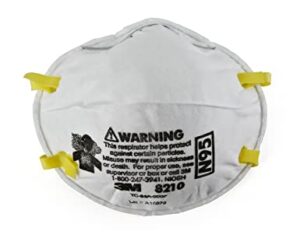
European Safety Federation position paper on the use of Filtering Face Piece type 2 respirators for the general public. 20210204 ESF position paper FFP2 general public.pdf
EUROPEAN STANDARD UNI EN 149:2001+A1:2009 FACEMASKS from the International Council of Certification. https://icc-iso.org/index.php/en/certificates/58-maskat-en
Half-Face Respirators
(these respirators are also called “elastomeric” respirators, have changeable filters based upon hazard and typically cover the nose and mouth)
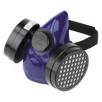
United States Department of Health, Centers for Disease Control website: A link to general information on respirators from the National Institute for Occupational Safety and Health. https://www.cdc.gov/niosh/topics/respirators/default.html
United States Department of Labor, Occupational Health and Safety Administration website: A link to general information on respiratory protection standards and training. https://www.osha.gov/respiratory-protection
Full-Face Respirators
(these respirators cover the eyes, nose and mouth and are therefore also called “gas masks” because they protect the entire face from chemicals and biologicals)
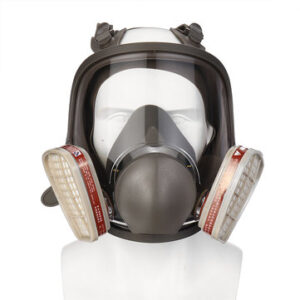
United States Department of Health, Centers for Disease Control website: A link to general information on respirators from the National Institute for Occupational Safety and Health. https://www.cdc.gov/niosh/topics/respirators/default.html
United States Department of Labor, Occupational Health and Safety Administration website: A link to general information on respiratory protection standards and training. https://www.osha.gov/respiratory-protection
Powered Air Purifying Respirators
(these respirators cover the entire head with a hood that is supplied with filtered air the is pushed to the head by a fan)
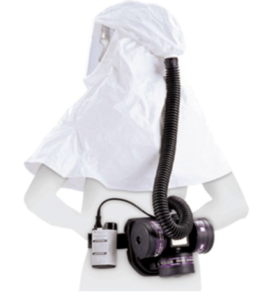
How to Safely Take off PPE, Selected Equipment: PAPR and Gown. United States Department of Health, Centers for Disease Control website: A link to a video on how to safely remove PPE and a PAPR. Youtube video
The Use and Effectiveness of Powered Air Purifying Respirators in Health Care, a PDF from the National Academies of Sciences. PAPRs in health care.pdf
To PAPR or not to PAPR. A journal article (PDF) from the Canadian Journal of Respiratory Therapy 2014, 50(3): 87–90. PAPR vs. N95.pdf
Use of powered air-purifying respirator (PAPR) by healthcare workers for preventing highly infectious viral diseases—a systematic review of evidence. A journal article (PDF) from Systematic Reviews (2020) 9:173. Use of PAPRs by health care workers.pdf
Program Management
A good biorisk program is an important component of mitigating biological risk. This includes many of the administrative controls that outline roles and responsibilities of key people, manuals, written standard operating procedures, training, signage and much more. The links below will provide you with more information upon which to build your biorisk management program.
Animal care and use committee (IACUC)
Committee composition, roles and responsibilities
A good animal biosafety commitee helps both the research and the animals being used in the research. It is very important that the correct numbers of animals are used only when necessary to gain valuable scientific information. The oversight of animals is research provides the necessary review to ensure use of animals is scientifically should, safe and the animal welfare needs are met.

From the Office of Laboratory Animal Welfare, a PDF document for download on the Institutional Animal Care and Use Committee (IACUC) – Institutional Animal Care Use Committee Guidebook.pdf
A link to the USA National Institutes of Health guide for establishing and Institutional Animal Care and Use Committee – IACUC.html
A link to IACUC Central, from the American Association of Laboratory Animal Science – IACUC central. html
Biosafety committee
Institutional biosafety committee (IBC), safety committee, etc.
This committee may be called many different things, but its main function is to provide oversight to the work being done with biological materials.

A link to an article from the Boston Globe regarding the validity and use of white laboratory coats for physicians. https://www.bostonglobe.com/metro/2015/11/18/doctors-debate-hanging-white-coat/wRJxWpiRFtm4ehy8Q9pIEJ/story.html
A guidance article (PDF download) from the US National Institutes of Health on the selection of laboratory coats – https://biosafetyonline.org/wp-content/uploads/2021/06/Guidance-for-the-Selection-of-Laboratory-Coats.pdf.pdf
A journal article (PDF download) of an article from the Journal of Biosafety on the importance of foot protection in the laboratory. https://biosafetyonline.org/wp-content/uploads/2021/06/Foot-Protection-Applied-Biosafety.pdf
A short not about the availability from one supplier of knife-resistant clothing – https://biosafetyonline.org/wp-content/uploads/2021/06/Knife-resistant-clothing.pdf
Checklists
Checklists can be an important additional component to an overall biorisk management program. While they shold not be relied upon to validate a program, they can be used as a useful supplement to guide a SOP, assessment or audit.

Risk Assessment
A proper risk assessment is the cornerstone of any good biosafety program. Understanding the risks and taking the appropriate control measures is biorisk management. Therefore, without a risk assessment, you cannot implement effective and strategic risk control.
Risk, by definition is a combination of the probability and consequences of an adverse event occurring. However, it is also assessed by the perception of the person to whom the event may occur. Therefore, it is subjective and varies depending upon a variety of factors.

-
From Risk Perception to Safe Behavior – Deloitte Touche Tohmatsu (PDF download) – https://biosafetyonline.org/wp-content/uploads/2021/12/From_Risk_Perception_to_Safe_Behaviour.pdf
-
USA Centers for Disease Control – Biological Risk Assessment: General Considerations for Laboratories – https://www.cdc.gov/safelabs/resources-tools/bio-risk-assessment.html
-
Pathogen Risk Assessment guideline from the Public Health Agency of Canada and the Canadian Food Inspection Agency (PDF download) – https://biosafetyonline.org/wp-content/uploads/2021/12/How-to-conduct-a-pathogen-risk-assessment-Canadian.pdf
-
Identifying and Evaluating Hazards in Research Laboratories from the American Chemical Society (PDF download) – https://biosafetyonline.org/wp-content/uploads/2021/12/Identifying-and-evaluating-hazards-in-research-laboratories.pdf
-
Laboratory Biosafety and Biosecurity Risk Assessment Technical Guidance Document from International Biological Threat Reduction, Sandia National Laboratories in collaboration with The International Federation of Biosafety Associations (PDF download) – https://biosafetyonline.org/wp-content/uploads/2021/12/Laboratory-Biosafety-and-Biosecurity-Risk-Assessment.pdf
-
New approaches to biological risk assessment from Royal Society and the International Council for the Life Sciences (PDF download) – https://biosafetyonline.org/wp-content/uploads/2021/12/New-Approach-to-Biological-Rsik-Assessment-2009.pdf
Shipping of biological materials
Biological materials are always being moved, within and between biomedical facilities. Issues of safety and security arise when moving these materials that you need to understand and manage.
Guidance on regulations for the Transport of Infectious Substances (2021) from the World Health Organization (PDF download) – https://biosafetyonline.org/wp-content/uploads/2021/09/WHO-International-Guidelines-on-Shipping-Infectious-Substances-2021.pdf
Guidelines on the international packaging and shipping of vaccines from the World Health Organization (PDF download) – htps://biosafetyonline.org/wp-content/uploads/2021/09/WHO-International-Guidelines-on-Shipping-Vaccines.pdf
Transporting infectious substances safely from the US Department of Transportation (PDF download) – https://biosafetyonline.org/wp-content/uploads/2021/09/Transporting_Infectious_Substances_Safely.pdf
Packing and Shipping Infectious Substances from the American Society for Microbiology (PDF download) – https://biosafetyonline.org/wp-content/uploads/2021/09/ASM-shipping-doc-pdf.pdf
Teaching biosafety
It is important to teach and train others about biosafety. This platform is just one of many different places that you can find teaching materials and methods. Pay it forward.
A link to the Centers for Disease Control (USA), Division of Laboratory Systems – Laboratory Training https://www.cdc.gov/labtraining?Sort=format%3A%3Aasc
A link to the Biosafety trainings from the Centers for Disease Control (USA) https://www.cdc.gov/safelabs/trainings.html
A link to the Principles of Laboratory Biosafety training site from the Canadian Public Health Agency of Canada https://training-formation.phac-aspc.gc.ca/course/index.php?categoryid=7
A link to Just-in-Time Training for Responders from the The Center for Food Security and Public Health at Iowa State University https://www.cfsph.iastate.edu/emergency-response/just-in-time-training/
A link to the Global Biorisk Management Curriculum (GBRMC) from Sandia National Laboratories https://gcbs.sandia.gov/tools/gbrmc/
A link to On-Demand Laboratory Training from the Association of Public Health Laboratories https://www.aphl.org/training/Pages/ondemand-laboratory-training-search.aspx
A link to Training Tools & Resources from the American Biological Safety Association International https://absa.org/topic/ttr/
A link to Free Safety Videos from US Chemical Safety Board https://www.csb.gov/videos/
A link to the Occupational Safety and Health Administration (USA) free videos https://www.osha.gov/video
A link to the National Emerging Special Pathogens Training & Education Center https://courses.netec.org/
